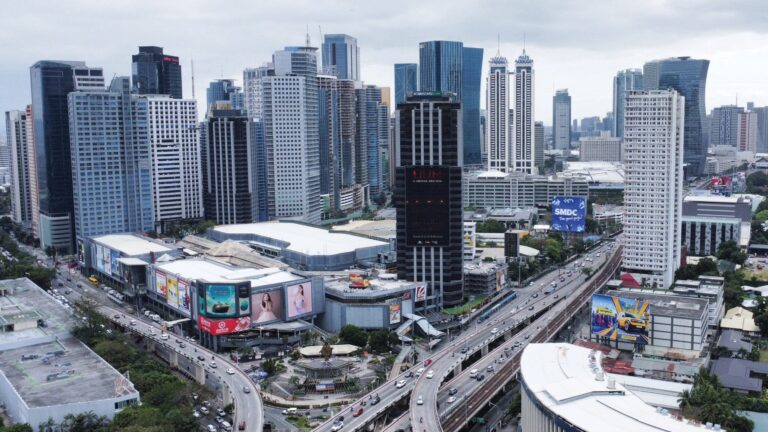Great strides in the Philippine currency and payment system The Bangko Sentral ng Pilipinas’ (BSP) efforts to advance the country’s payments digitalization started almost a decade ago and today, with the increase in mobile banking services and the growing usage of e-wallets, the retail payment environment has been irrevocably transformed.The media, with the Manila Bulletin at …
Great strides in the Philippine currency and payment system
The Bangko Sentral ng Pilipinas’ (BSP) efforts to advance the country’s payments digitalization started almost a decade ago and today, with the increase in mobile banking services and the growing usage of e-wallets, the retail payment environment has been irrevocably transformed.
The media, with the Manila Bulletin at the forefront, helped the Filipino public’s widespread acceptance of digital cash or e-money, especially during the pandemic. The shift to e-payments has steadily grown due to the momentum it achieved when the Covid-related lockdowns or movement restrictions forced the public to transact digitally.
The BSP tapped the media to effectively communicate its program of gradually migrating payment transactions into e-payments while at the same time improving the way Filipinos deal in physical cash by introducing polymer banknotes in 2021.
At least three BSP governors, one current and two former, have said that while the push for e-payments would only accelerate in the future, the central bank does not intend to phase out the use of physical banknotes or cold cash.
Bangko Sentral ng Pilipinas is one of select central banks in the world that has the capacity to print its entire banknotes requirement after investing over ₱10 billion since 2014 to upgrade and modernize its printing and minting operations.
BSP governor Eli M. Remolona Jr. said they would continue to expand and improve payments digitalization and financial inclusion. He believes the BSP has the resources and the drive to “empower Filipinos in building a more inclusive and cashlite society.”
The Manila Bulletin has supported the BSP and the banking community in ensuring the public that at all times, access to money, whether digital cash or physical banknotes, are available and easy.
The newspaper has provided relevant and timely stories on the state of Philippine currency circulation, its production and supply, and after the pandemic, the reporting of the payment system and e-payments.
In a July 2024 article, “BSP keeps stable currency buffer stock” that came out in the Manila Bulletin, it reported that BSP has at least a currency buffer stock worth ₱200 billion to ensure there is adequate supply of banknotes and coins on any given year. This is insurance against uncertainties and shocks when it comes to currency supply.
In 2023, the BSP’s currency production deliveries reached ₱781.6 billion worth of banknotes or about 1.9 billion pieces, and another ₱10.3 billion worth of coins or 1.8 billion pieces. The BSP services the country’s currency requirements by strategically scheduling and adopting more efficient modes of currency shipments, making available a buffer stock to meet currency demand or potential delay in currency delivery to the regions, servicing the withdrawals of banks with new and fit banknotes and coins in accordance with their denominational requests, and reviewing and updating currency operational procedures, processes, and practices, aimed at improving operational efficiency and internal controls.
At the moment, the BSP prints banknotes and mint coins at its six-hectare East Avenue, Quezon City Security Plant Complex (SPC), built in 1978.
To modernize banknotes printing, the BSP will develop a ₱25-billion, 31.2-hectare new Currency Production Facility in New Clark City in Capas, Tarlac.
The Manila Bulletin was first to report in November 2018 that the BSP was planning to relocate its Quezon City printing facility to a much bigger area. In the article, “BSP plans sale of ₱8 billion SPC,” it was reported that, besides Clark, Pampanga, the BSP was also considering relocating SPC to Bonifacio Global City.
Since 2017, the BSP has been studying the future of currency production with the changes in the new payments technology. This new era in the payments system was embodied in the 2016 launch of the National Retail Payment System to enable the shift from a cash-heavy to cash-lite economy.
The Manila Bulletin has helped BSP, as the first banking regulator to have laid down rules covering e-money services, cryptocurrency, and using Fintech for financial inclusion, to communicate to the general population that a digital transformation was coming.
The BSP has prepared for the future of Philippine currency. It is one of select central banks in the world that has the capacity to print its entire banknotes requirement after investing over ₱10 billion since 2014 to upgrade and modernize its printing and minting operations. The Manila Bulletin was in fact the first to break the story of the programmed ₱10-billion SPC modernization.
It was the Manila Bulletin that also first reported in 2012 and in 2015 that BSP was buying new banknotes printers to increase its operational capacity. The newspaper reported that BSP has purchased two superline printers from Komori Corp. of Japan worth over ₱2 billion, which replaced its 40-year-old banknotes printing machines. This raised its printing capacity from 1.8 billion pieces of banknotes to four billion per year.
Fast forward to 2024: In a July 2024 article, “52.8% of retail payments now digital” the BSP announced that it has surpassed its original target of migrating 50 percent of all retail payments into digital form by the end of 2023.
The share of digital payments to total retail payments of 52.8 percent is equivalent to 2.62 billion monthly payment transactions made digitally. This translates value-wise to $110 billion or ₱6.1 trillion.
Remolona said the above-target e-payments transactions were “proof that our pursuit of a cash-lite economy has consistently been progressing” and that they are now “ready to bring digital finance to new heights.” The next target is to achieve a 60 to 70 percent e-payments over total retail transaction volume by 2028.
Based on the BSP’s Digital Payments Transformation Roadmap and its National Strategy for Financial Inclusion, by end-2023, half of all payment transactions should be in digital form while 70 percent of adult Filipinos should have formal accounts. There is no update yet on the formal accounts’ data.
The increase in account ownership was attributed to the uptake of e-money accounts, which climbed to 36 percent in 2021 from eight percent in 2019. This became the most common type of account among adults in the middle class and low-income population, as well as with those aged 15 to 49 years old, said the BSP.
The share of digital transactions in total payments has been growing steadily with both InstaPay and PESONet. Also, more people are using the QR Ph code for payments.






